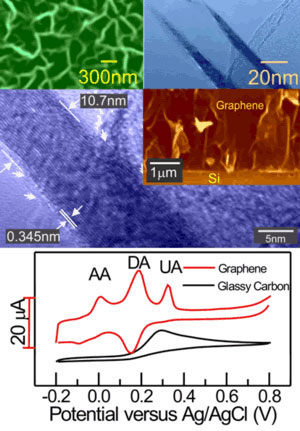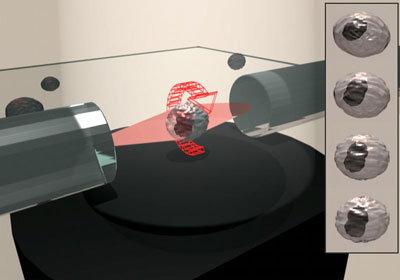Tuning magnetic nanotubes
New research could help engineers design nanotube geometries that are optimum for data storage, or for other possible applications in microelectronics and medicine.
Oct 21st, 2008
Read more
New research could help engineers design nanotube geometries that are optimum for data storage, or for other possible applications in microelectronics and medicine.
Oct 21st, 2008
Read moreScientists have greatly improved the sensitivity of detection of the ejected material by using an infrared laser for photoionization prior to analysis by the mass spectrometer.
Oct 21st, 2008
Read moreTechniques for three dimensional and molecular scale nanofabrication.
Oct 21st, 2008
Read moreThanks to a machine built by Adam Cohen and his colleagues at Harvard, it may be possible to confine a single molecule and study its motions at the same time.
Oct 21st, 2008
Read more Scientists successfully demonstrated the fast electron transfer, excellent electrocatalytic and biosensing properties of graphene sheets for the first time.
Scientists successfully demonstrated the fast electron transfer, excellent electrocatalytic and biosensing properties of graphene sheets for the first time.
Oct 21st, 2008
Read more Researchers present the Optical Cell Rotator, a novel tool for the contact-free orientation of biological samples using laser radiation.
Researchers present the Optical Cell Rotator, a novel tool for the contact-free orientation of biological samples using laser radiation.
Oct 21st, 2008
Read moreBoron has to date far been one of biology's best kept secrets, but is now attracting fast growing research interest and investment from the pharmaceutical industry in the quest for novel drugs to tackle cancer and infectious diseases, potentially overcoming limitations and side effects of current products.
Oct 21st, 2008
Read moreA $100 million Australian National Fabrication Facility launched this month in Canberra includes a Queensland node, based at The University of Queensland.
Oct 21st, 2008
Read moreResearchers have developed a new way to tweeze apart interacting cells and molecules using magnetic forces. This technology, which relies on attaching microscopic magnetic particles, allows them to measure exactly how strongly the interactions are between biological molecules.
Oct 20th, 2008
Read moreScientists have developed a technology for patterning molecules on a surface in a way that can help guide the growth of new neurons.
Oct 20th, 2008
Read moreR+D Magazine has recognized a tabletop microscope developed by a team of Colorado State University and Berkeley researchers at the National Science Foundation Engineering Research Center for Science and Technology as one of the Top 100 most significant technological advances for 2008.
Oct 20th, 2008
Read moreThe College of Nanoscale Science and Engineering of the University at Albany today announced plans for the world's first celebration of 'NANOvember,' a month-long series of events and activities that showcase the exciting world of nanotechnology.
Oct 20th, 2008
Read more Scientists at the U.S. Department of Energy's Lawrence Berkeley National Laboratory and the University of California at Berkeley have used in situ transmission electron microscopy to measure hollow spherical nanoparticles that withstand extreme stress and deform without losing strength.
Scientists at the U.S. Department of Energy's Lawrence Berkeley National Laboratory and the University of California at Berkeley have used in situ transmission electron microscopy to measure hollow spherical nanoparticles that withstand extreme stress and deform without losing strength.
Oct 20th, 2008
Read moreAndrea Armani of the University of Southern California has adapted a clever optical microcavity resonance technique for rapidly detecting even individual unlabelled target molecules.
Oct 20th, 2008
Read moreA novel engineering technique involves the use of modified thermal ink-jet printers to print cells, creating the complex three-dimensional structure of real tissues.
Oct 20th, 2008
Read moreThe most advanced and powerful electron microscope on the planet - capable of unprecedented resolution - has been installed in the new Canadian Centre for Electron Microscopy at McMaster University.
Oct 20th, 2008
Read more